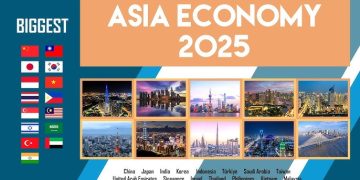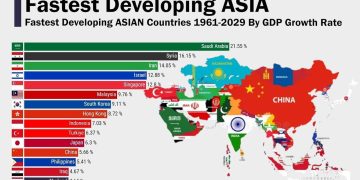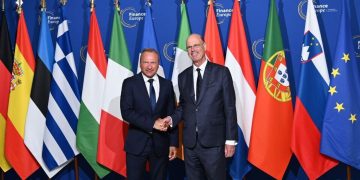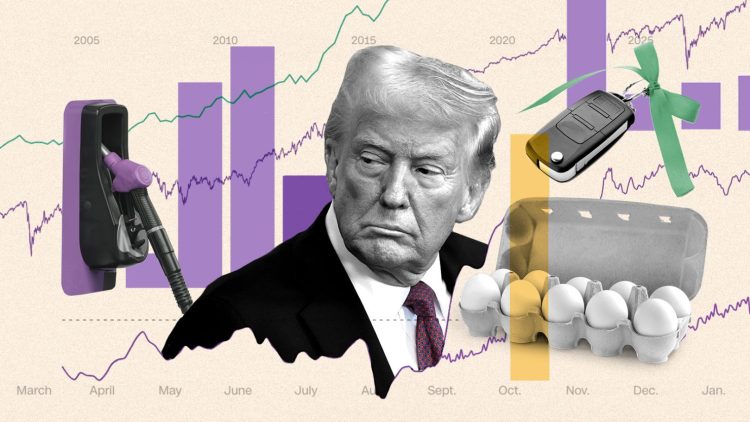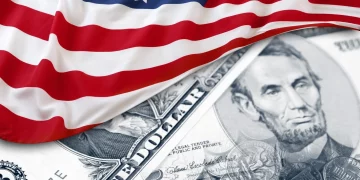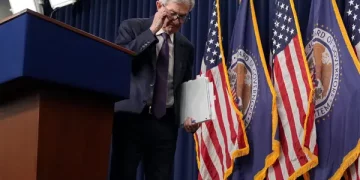1. A Decade Defined by Strategic Ambiguity
As the United States moves deeper into the 2020s, its economic engine is powered less by confidence and more by calculation. The exuberant post-pandemic recovery has faded into an age of strategic ambiguity—one defined by geopolitical fragmentation, capital realignment, and the race for technological dominance.
For investors, policymakers, and innovators alike, the question is no longer whether the U.S. economy will grow, but what kind of growth it will sustain. The traditional formula of free-market dynamism and global integration is giving way to a new paradigm: state-guided capitalism under the shadow of uncertainty.
2. The Investment Landscape: Tight Credit, High Stakes
After two years of aggressive monetary tightening, the Federal Reserve has managed to curb inflation—but at a steep cost to liquidity. Interest rates remain near their highest levels in two decades, creating an investment environment that rewards prudence over risk. Venture capital funding has fallen sharply since its 2021 peak, while private equity firms hold record amounts of “dry powder” yet deploy it cautiously.
Corporate America is adjusting. The easy money era—when zero rates justified moonshot bets—is over. Startups now face a dual squeeze: dwindling investor appetite and rising operating costs. The once-hyped sectors of crypto, e-commerce, and speculative tech have cooled, replaced by quieter but more grounded interests: artificial intelligence, semiconductors, and clean energy.
These industries align closely with Washington’s new industrial priorities. The Inflation Reduction Act (IRA), the CHIPS and Science Act, and the Infrastructure Investment and Jobs Act have collectively redirected hundreds of billions of dollars toward strategic innovation. Capital now flows not merely to where returns are highest, but where national resilience is at stake.
3. The Return of Industrial Policy
For decades, the United States prided itself on minimal government intervention. That era is over. Confronted with supply chain disruptions, energy shocks, and rising Chinese competition, Washington has rediscovered the art of industrial policy.
The CHIPS Act’s subsidies for domestic semiconductor manufacturing mark a symbolic shift: America is no longer content to rely on global efficiency—it seeks technological sovereignty. In 2025, the first wave of chip plants in Arizona, Texas, and New York are nearing operational capacity. Yet progress remains uneven: talent shortages, construction delays, and regulatory hurdles temper the enthusiasm.
Still, the strategic intent is clear. As Treasury Secretary Janet Yellen recently argued, “economic security is national security.” The phrase encapsulates the new orthodoxy in Washington, one that blurs the line between commerce and geopolitics.
Investors are adapting accordingly. Capital is increasingly tied to government priorities—energy transition, advanced manufacturing, quantum computing, and defense tech. The U.S. innovation model is becoming more coordinated, less spontaneous. In some ways, it resembles the state-capitalist frameworks it once criticized.
4. The AI Boom: Innovation as Economic Hedge
If industrial policy provides structure, artificial intelligence provides momentum. The AI revolution is America’s most potent source of optimism amid macroeconomic headwinds.
In 2024, AI-related investments in the U.S. surpassed $200 billion, a figure projected to grow another 25% in 2025. From enterprise automation to generative media, AI’s applications are diffusing across industries. But beneath the excitement lies an important economic function: AI innovation is acting as a hedge against stagnation.
Productivity growth in the U.S. has been sluggish for years. The promise of AI—faster coding, leaner operations, automated logistics—is reviving hopes of a new efficiency wave. Major firms such as Microsoft, Nvidia, and Google are leading a race that blurs the boundaries between research and commerce, while startups explore hyper-niche applications from climate modeling to synthetic biology.
Yet the concentration of AI wealth remains a risk. With capital and computational power dominated by a handful of firms, the innovation ecosystem risks ossification. The next challenge for U.S. policymakers is not how to spark innovation—but how to democratize it.
5. Investment Geography: The New Map of America’s Growth
Beneath national statistics lies a shifting geographic reality. The U.S. economy is decentralizing. The Sun Belt and Midwest, once symbols of industrial decline, are experiencing an unexpected renaissance. Cities like Austin, Phoenix, Columbus, and Chattanooga are attracting both manufacturing investment and skilled migrants.
This transformation is driven by a blend of policy incentives, lower costs, and digital infrastructure. Semiconductor fabs rise amid former farmlands; EV battery plants coexist with data centers. The new industrial geography of America is less coastal and more continental—a rebalancing decades in the making.
However, this transition is not without friction. Infrastructure strains, housing shortages, and regional inequality pose challenges. But for now, capital is following a distinctly American instinct: reinvention through relocation.
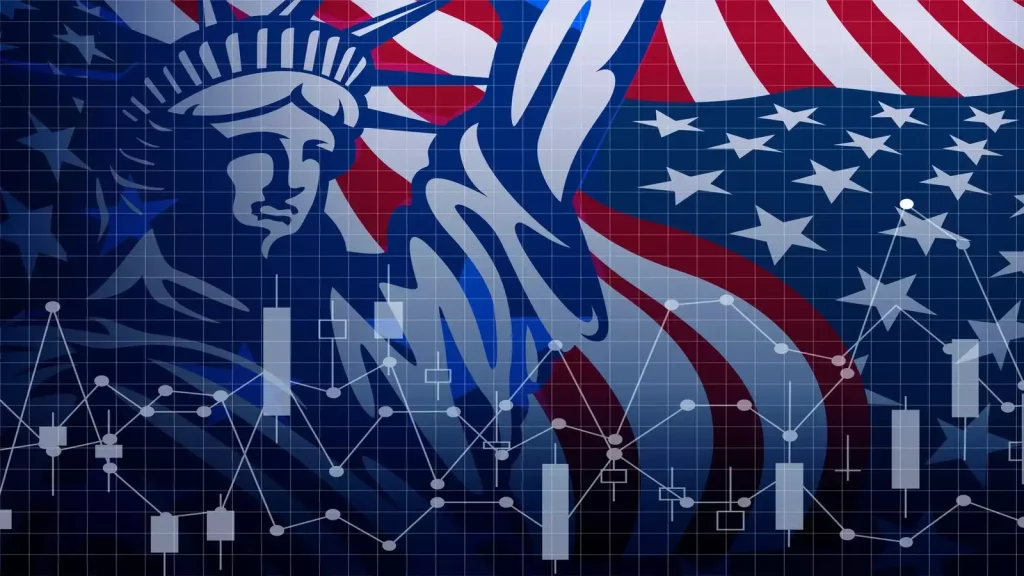
6. Global Capital: Friend, Foe, or Both?
Amid the reordering of supply chains and security alliances, global capital faces new scrutiny. The U.S. remains the world’s most attractive investment destination, yet foreign direct investment (FDI) has become increasingly politicized.
Chinese venture activity has all but vanished from U.S. markets, replaced by cautious flows from Europe, Japan, and the Gulf states. Sovereign wealth funds, once passive financiers, are now strategic partners in clean energy and infrastructure deals. The new logic is one of aligned capital: investment that reinforces strategic partnerships rather than pure profit motives.
This selective openness marks a shift from globalization’s heyday. The ideology of free capital movement has given way to curated interdependence—a middle path between decoupling and integration. For global investors, navigating this terrain requires not only financial acumen but geopolitical literacy.
7. The Venture Capital Reckoning
Nowhere is the shift more visible than in venture capital. The U.S. VC industry, which minted unicorns at a record pace during the pandemic, is undergoing painful recalibration. Funding volumes in early 2025 are down nearly 40% from their 2021 peak. Exit opportunities through IPOs remain scarce, and valuations are returning to pre-bubble norms.
Yet this correction may be healthy. It is forcing investors to refocus on fundamentals—profitability, scalability, and mission relevance. As a partner at Andreessen Horowitz recently put it, “We’ve moved from the era of blitzscaling to the era of proof.”
In this new environment, innovation continues—but it must justify itself economically, not just narratively. The capital discipline emerging from this cycle could ultimately strengthen America’s innovation backbone, making it more resilient and globally competitive.
8. Energy Transition: The Dual Investment Challenge
The energy transition is another arena where uncertainty meets opportunity. The U.S. aims to cut carbon emissions by 50% by 2030, but achieving that goal requires unprecedented private investment.
The IRA’s incentives have unleashed a flood of capital into solar, wind, hydrogen, and battery projects. However, rising interest rates and supply chain bottlenecks threaten project viability. The paradox is striking: the money exists, but the margins are thin.
Still, energy innovation remains one of the few bipartisan economic engines. Red and blue states alike compete for green manufacturing facilities, creating a rare zone of national consensus amid political polarization. As global energy markets grow more volatile, America’s investment in renewables becomes both an environmental and strategic hedge.
9. Innovation Under Pressure: The Geopolitical Overlay
Geopolitics is now an inescapable variable in U.S. innovation strategy. The Biden administration’s “small yard, high fence” approach to technology export controls aims to protect national security but risks fragmenting global supply networks.
Allies in Europe and Asia support the strategic intent but worry about collateral effects on competitiveness. Meanwhile, China accelerates its self-reliance drive, intensifying the tech bifurcation that defines this decade.
For U.S. firms, the challenge is balancing open innovation with secure innovation. Collaboration is still essential—but trust now carries a geopolitical premium.
10. The New Definition of Confidence
Ultimately, America’s investment story in 2025 is less about exuberance and more about endurance. The U.S. remains the world’s innovation hub, but the nature of its confidence has changed.
Gone is the bravado of limitless liquidity. In its place stands a more cautious, strategic, and policy-aligned form of capitalism—one that seeks stability through direction. The interplay of private ingenuity and public strategy will define whether this experiment succeeds.
As one senior economist at Brookings noted recently, “Uncertainty is not the enemy of innovation—it’s the environment in which innovation proves its worth.”
The U.S., once again, is testing that thesis in real time.









